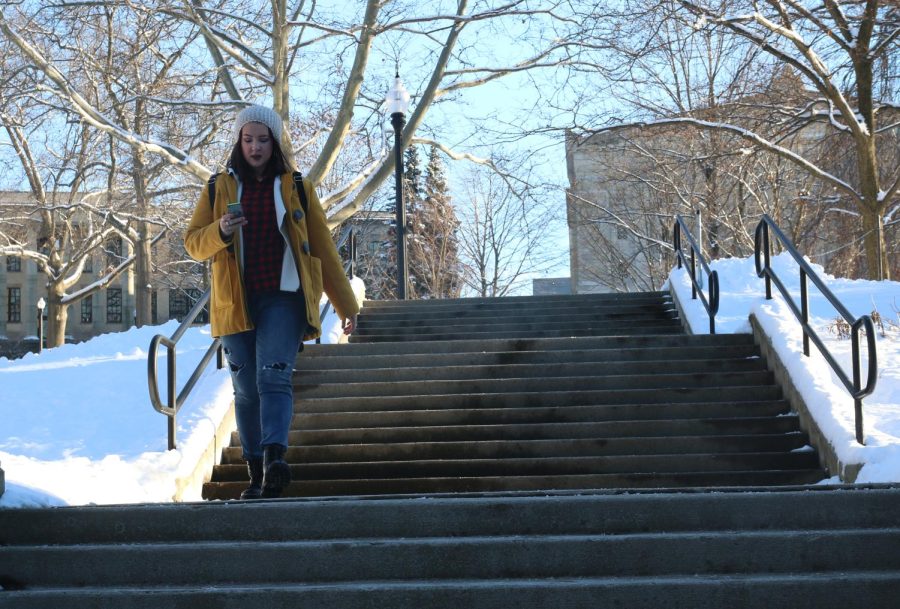What you need to know to survive winter in Kent
December 8, 2015
As the semester draws to a close, the harsh Northeastern Ohio winters become more of a reality for students at Kent State. Low wind chills, heavy snow and ice covering sidewalks and the Esplanade commonly plague the campus during the winter months.
Todd Diacon, senior vice president for academic affairs and provost, listed factors that determine if the campus closes.
“Our decision (to close campus) is guided by the condition of major roadways leading to campus, by the condition of campus roadways and sidewalks and by our ability to shovel our parking lots,” Diacon said in a press release on Nov. 24.
Diacon also said that for extreme cold, the university will delay or cancel when the wind chill reaches (or is predicted to reach) -20 degrees Fahrenheit for an extended period.
Regardless of the university’s decisions to stay open, these conditions still have the potential to expose students to hypothermia. The Mayo Clinic asks those to remember the acronym “COLD,” before they step out in subzero temperatures; Cover their hands and heads with hats and gloves; avoid Overexertion; wear Layers and stay Dry.
While the internal health of the students is a concern every winter, the university also plays a significant role in preparing the grounds for safe travel.
“We are the primary snow clearers on campus,” said Heather White, manager of university facilities management.
Having the grounds keepers on campus is a substantial help to the university, Tricia Knoles, a Kent State police officer, said.
“Our grounds department is wonderful,” Knoles said. “They are in charge of cleaning all of the sidewalks, making sure there is safe place for (the students and faculty) to walk (so) they don’t have to walk in the street.”
White said there are 22 miles of sidewalk that need to be cleared throughout campus and there are 30 employees, including those who shovel, plow snow and keep ice from thickening.
“We have any number of size of plows that will go on any sidewalk and clear the snow,” White said. “They also throw salt as needed anywhere on campus. Sometimes if we have enough lead time and we know what is coming, we will pre-treat the sidewalks and that’ll help make clearing a little easier.”
White recognized that the safety of the students while walking through campus is a main priority and said they do all that they can to prevent dangerous areas.
“I think that’s why you see that the salt barrels are everywhere and the amount of salt that we put down,” White said. “We are out there constantly monitoring areas that we know are particularly bad.”
Students on campus explained how they prepared to walk through harsh temperatures.
“First, I’ll definitely have to mentally prepare because I never want it to be winter time,” said Courion Williams, a junior fashion design major. “I’ll definitely wear more layers, long underwear and more under shirts, a bigger coat, scarves, hat, everything. It’s not even the snow here (that is bad). It’s just the wind and the air.”
As far as school closings, Flash ALERTS are sent out to students after receiving input from the Provost, university of communications and marketing (UCM), the campus police and the university of architect Knoles said.
Knoles said that as long as sidewalks, roads and parking lots are clear then classes will remain.
“If those are not cleared out, that’s where students won’t have a place to park, (will) not be able to walk around campus safely and (the departments) will get that input and make the decision to close school,” Knoles said.
When school cancellations do not occur, White says it shows that they are keeping up and doing their job effectively to keep campus clear.
“It’s a point of pride for us not to close,” White said.
Dana Miller ([email protected]) is a safety/transportation reporter and Shane Beneke ([email protected]) is a health reporter for The Kent Stater.

























